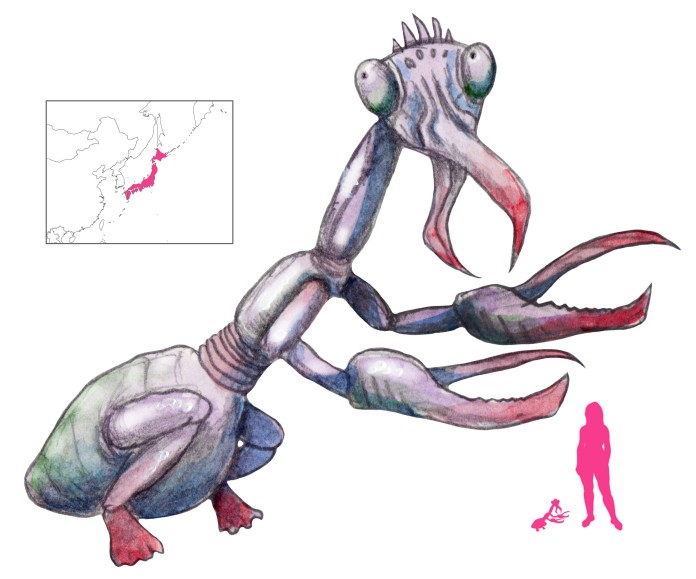Variations: Kami-kiri, Kami Kiri, Kamikiri-ma, Kamikiri-mushi, Kami Kiri Mushi; Amikiri (probably)

Hair has been of historical importance in Japan. During the Edo period, the chonmage or topknot in men was a status symbol. In women, long hair indicated beauty and wealth, with differing hairstyles communicating age, rank, and availability. Cutting one’s hair was a solemn and drastic step associated with religious vows.
Cutting someone’s hair without their consent, therefore, was a spiteful and criminal act, even more so if it seemed to happen without reason. Inexplicable and sudden hair-cutting was known as Kamikiri, “hair cutter”. Most kamikiri incidents happened at twilight, and the victims were usually young women. Matsuzaka City was especially plagued by kamikiri. Often the hair was snipped off while the victim was walking, with the crime noticed only upon returning home.
Who was to blame for kamikiri? Demonic winds could have been the culprit, and they were countered with prayers written on papers and placed in hairpins. Kitsune were also blamed; after three women fell victim in one area, a fox was cut open and long hair found inside.
The phenomenon has also been attributed to a yokai, the kamikiri, kamikiri-ma (“hair-cutting demon”), or kamikiri-mushi (“hair-cutting insect”). It may have been a large longhorn beetle (Cerambycidae), but Edo scrolls elaborate that into a small humanoid creature with pincer hands and a birdlike face. The insect features may be due to kamikiri’s similarity with kamakiri, “praying mantis”.
Toriyama Sekien’s yokai compendia do not include the kamikiri, but rather the scorpion-like amikiri or “net-cutter”. This may be an error, or Sekien’s own spin on the scissors-handed yokai.
References
Foster, M. D. (2015) The Book of Yokai. University of California Press, Berkeley.
Hepburn, J. C. (1872) A Japanese-English and English-Japanese Dictionary. American Presbyterian Mission Press, Shanghai.
Thunberg, C. P. (1796) Travels in Europe, Africa, and Asia, v. III. F. and C. Rivington, London.